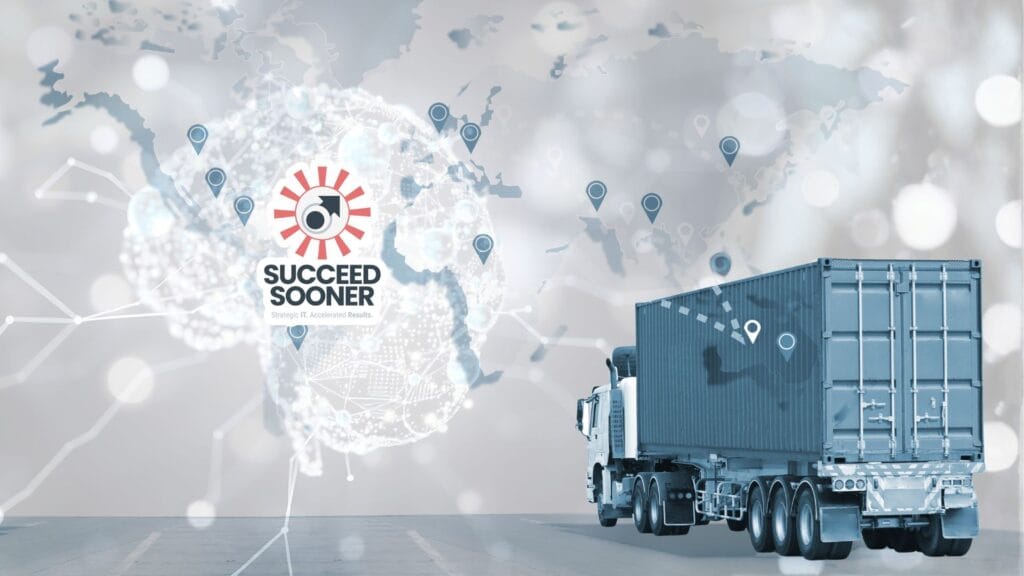Global trade today is defined by uncertainty. Small and Medium-sized Enterprises (SMEs) face a constant barrage of volatility, including unpredictable supply chain disruptions, rapidly fluctuating supplier costs, and shifting tariff landscapes. To survive and thrive in this environment, businesses must possess the ability to pivot and adapt quickly. Creating trade resilience through technology requires strategic IT experience and support.
This kind of rapid adaptation requires more than just good instincts; it demands real-time data visibility into your value chain, inventory levels, and true landed costs. This is where your technology strategy becomes your most critical defense.
The Problem: When Volatility Hits the Bottom Line
When trade uncertainty strikes, many SMEs find their existing systems cannot keep up. Their core problems often center on complexity and delayed data:
- Lagging Cost Data: Costs can change weekly due to logistics or tariffs, yet financial systems only update monthly. This delay prevents fast pricing adjustments and accurate profitability assessment.
- Inventory Blind Spots: Without real-time, consolidated visibility, businesses over-order to mitigate risk, tying up valuable working capital in safety stock.
- Compliance Chaos: Managing compliance across multiple jurisdictions becomes an expensive, manual nightmare that drains employee time and invites errors.
These operational failures are not strategic choices; they are symptoms of a missing Technology Blueprint: a plan that ensures your systems can handle complex, multi-market requirements.
The Strategic Imperative: Visibility Through Technology
Trade resilience requires systems that integrate and talk to each other, transforming raw logistical data into actionable financial intelligence.
Consider the challenge faced by many high-volume logistics firms. They realized they needed a custom software solution to monitor evolving fuel costs and border transit times, then feed that data instantly into their pricing models. This allowed them to proactively adjust quotes rather than absorbing margin losses.
The decision to tackle this problem is complex: Should you build a custom application, or purchase a third-party tool? Do you need AI, or just better aggregation and visibility of your existing data? Making the wrong choice can lead to massive sunk costs, integration failures, and vendor lock-in.

The Fractional CIO: Your Architect for Resilience
This is the precise moment when a Fractional CIO becomes essential. They do not just recommend software; they develop the Strategic Technology Blueprint necessary for trade resilience.
The Fractional CIO’s focus is two-fold:
- Defining the Value Chain: They first map your entire value chain, identifying the exact points where volatility enters the business (e.g., procurement, customs, warehousing). This defines the data required for visibility and the process and specific problems to be solved.
- Determining Build vs. Buy: With a vendor-neutral perspective, they assess whether a commercial off-the-shelf (COTS) solution can solve the problem or if a custom solution is the better long-term investment. They ensure any chosen solution integrates seamlessly with your existing core systems, such as your Enterprise Resource Planning (ERP).
The goal is not simply to “buy a tool,” or “implement AI”, but to utilize technology to simplify and manage complexity that solves your actual business problem. This approach transforms chaotic data into a strategic asset, providing the foresight you need to pivot quickly and protect margins.
What’s Next
Trade volatility is no longer an anomaly; it is the new standard operating environment. The ability to pivot quickly, driven by real-time data on costs and inventory, is now a fundamental requirement for protecting your bottom line.
Is your technology architecture a source of resilience, or is it adding to your compliance complexity and inventory risk? If your current systems are trapping you in slow, manual processes, a strategic blueprint is your most valuable next investment.
Don’t wait for the next tariff change or supply shock to expose your systems’ weaknesses. Let’s connect with Succeed Sooner Consulting to develop the strategic technology roadmap that turns trade uncertainty into your competitive advantage.


Leave a Reply